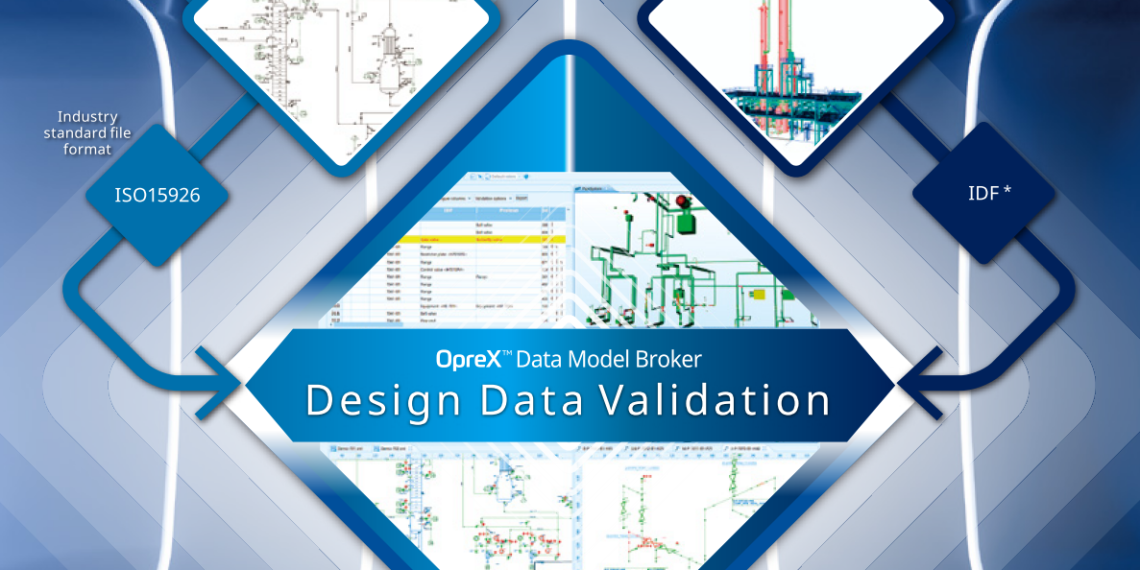The “OpreX Data Model Broke” platform, which was developed by Yokogawa, automatically checks data consistency in different plant designs and instrumentation systems and allows their cross-use by applying the AI technique “ontology” in database operation and management.
“Design Data Validation” is the first component released for this platform and facilitates the complicated and time-consuming task of systematically identifying and verifying inconsistencies between piping and instrumentation (P&ID) schematics and 3D piping diagrams. By automatically identifying such inconsistencies in extremely large data sets, this component increases work efficiency and significantly reduces the amount of work usually required.
Development Background
As the size and complexity of process plants have increased in recent years, the equipment installed in these plants has also become more complex. When a plant is newly built or expanded, the departments responsible for the individual work areas use different planning tools. This also applies to plants for which there are not only design and specification documents, but also diagrams from device and equipment manufacturers and engineering data from various system suites.
In most cases, very time-consuming manual checks have to be performed to ensure complete consistency of all data. While the number of 3D piping diagrams is usually already in the thousands, a large project may have as many as 10,000 or more of these documents, and all of this data currently needs to be manually checked. As a result, there is a strong demand for a system that uses digital technologies to increase the interoperability of the data and ensure its reliability.
Features
The following consistencies are automatically verified by Design Data Validation of the platform:
- all piping attribute information in P&ID and 3D piping diagrams is cross-checked
- the attribute information for each pipeline component and its sequences are validated
- when a change to a valve end piping specification is defined in a P&ID, the piping specifications for that valve and its flange are validated in the 3D piping diagram
- it is verified that the flow direction for each piping component in the 3D piping diagram matches the process flow direction in the P&ID.
Main applications
Verification of P&ID and 3D piping diagrams during the engineering, procurement, and construction (EPC) phase for petroleum, chemical, and other plant construction or expansion projects.

















